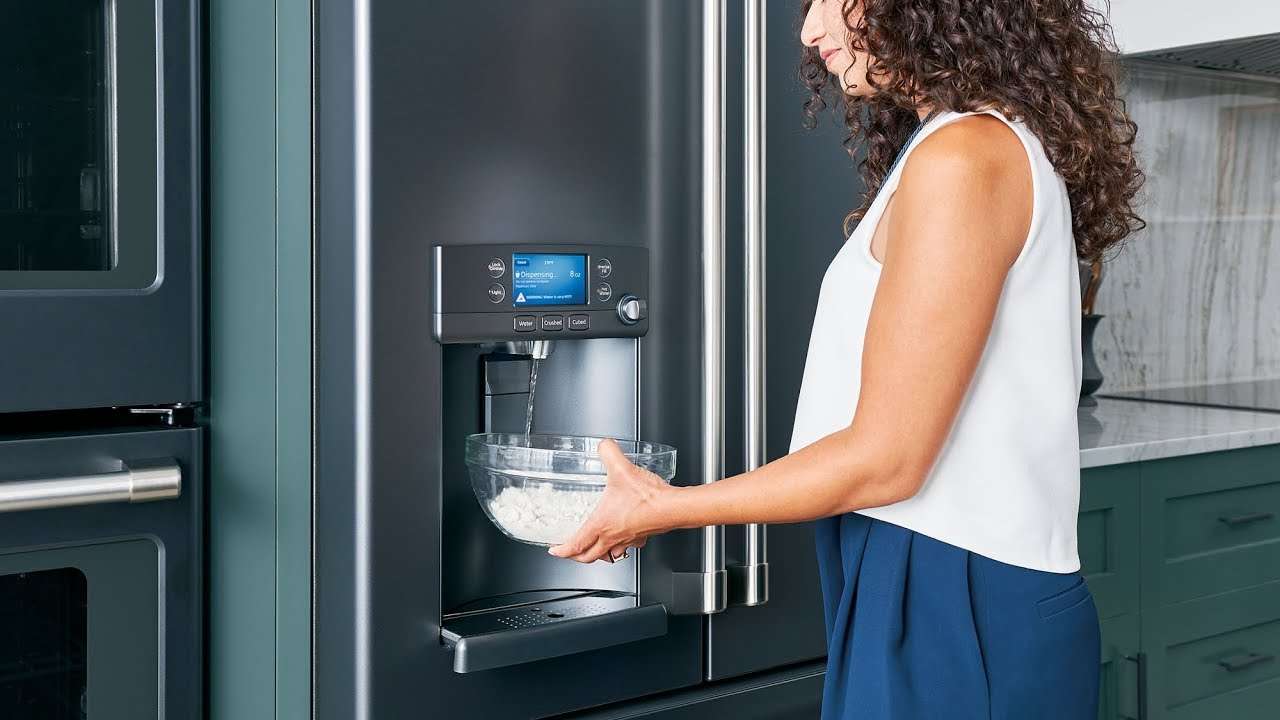The modern kitchen is constantly evolving, seeking appliances that offer convenience, efficiency, and a touch of luxury. Among these innovations, the refrigerator with measured fill water dispenser stands out as a game-changer. It transcends the basic function of cooling food, providing precise hydration at your fingertips. Imagine effortlessly dispensing the exact amount of water needed for a recipe, a baby bottle, or your favorite water bottle – no more guesswork, no more spills, just perfect portions every time. This technology truly elevates the everyday experience of owning a refrigerator with measured fill water dispenser.
The Allure of Precision: Why Measured Fill Matters
Traditional refrigerator water dispensers often leave users playing a guessing game, awkwardly holding containers while trying to estimate the fill level. This can lead to overflows, wasted water, and a general sense of frustration. A measured fill dispenser solves this problem by offering a pre-set or customizable selection of water quantities. But why is this so appealing?
- Accuracy for Recipes: Baking and cooking often require precise measurements. A measured fill dispenser ensures you have the exact amount of water needed, eliminating errors and improving your culinary results.
- Portion Control for Hydration: Whether you’re trying to track your water intake or simply prefer a specific volume, a measured fill allows for consistent portion control.
- Convenience for Baby Formula: Accurately preparing baby formula is crucial. A measured fill dispenser provides the right amount of water every time, simplifying the process and ensuring consistency.
- Reduces Waste: By dispensing only the required amount of water, you minimize spills and unnecessary waste, contributing to a more sustainable lifestyle.
Comparing Measured Fill Systems: A Quick Overview
While the core concept remains the same, measured fill systems can vary across different refrigerator models. Here’s a brief comparison of some common approaches:
| Feature | Basic Measured Fill | Advanced Measured Fill |
|---|---|---|
| Pre-set Options | Limited (e.g., 8 oz, 16 oz, 24 oz) | Wider range of pre-sets, often customizable |
| Custom Volume Input | May not be available | Allows user to input a specific volume (e.g., 11 oz) |
| Smart Features | Rarely included | May integrate with smart home systems, track water usage, or provide reminders |
| User Interface | Simple buttons or dial | Touchscreen display with intuitive menu |
Beyond Measurement: Considering Other Refrigerator Features
While the measured fill dispenser is a significant advantage, it’s crucial to consider other factors when choosing a refrigerator. Think about the overall storage capacity, energy efficiency, ice maker capabilities, and design aesthetics. A refrigerator should not only provide precise water dispensing but also meet your overall cooling needs and complement your kitchen’s style.
Ultimately, the decision to invest in a refrigerator with measured fill technology is a personal one. However, the convenience, precision, and efficiency it offers make it a compelling addition to any modern kitchen. The future of refrigeration is undoubtedly geared towards enhanced user experience, and the refrigerator with measured fill water dispenser is a prime example of this trend.
INSTALLATION AND MAINTENANCE CONSIDERATIONS
The integration of a measured fill water dispenser necessitates a careful consideration of installation prerequisites and ongoing maintenance protocols. Before acquisition, potential buyers should ascertain the compatibility of their plumbing infrastructure with the refrigerator’s water supply requirements. This typically involves verifying the presence of a dedicated cold water line equipped with a shut-off valve within proximity to the intended refrigerator placement; Moreover, it is imperative to adhere meticulously to the manufacturer’s installation guidelines to ensure optimal functionality and prevent potential water leakage issues. Subsequently, routine maintenance, encompassing the periodic replacement of water filters as prescribed by the manufacturer, is crucial for sustaining water quality and preventing the accumulation of mineral deposits that could impede the dispenser’s performance.
ADDRESSING POTENTIAL TECHNICAL CHALLENGES
Despite the technological advancements inherent in measured fill dispensers, certain technical challenges may arise during operation. These may include, but are not limited to, inaccuracies in volume dispensing, flow rate inconsistencies, or occasional malfunctions of the electronic control system. In such instances, a systematic troubleshooting approach is recommended. Initially, users should consult the refrigerator’s user manual for guidance on addressing common issues. Furthermore, verifying the integrity of the water supply line and ensuring adequate water pressure is essential. Should the problem persist, contacting the manufacturer’s customer support or engaging a qualified appliance repair technician is advisable to diagnose and rectify the underlying cause effectively.
THE ECONOMIC AND ENVIRONMENTAL IMPLICATIONS
The adoption of refrigerators equipped with measured fill water dispensers carries implications that extend beyond mere convenience. From an economic standpoint, the reduction in water wastage afforded by precise dispensing can contribute to lower water bills over time. Furthermore, the elimination of the need for bottled water, facilitated by the readily available filtered water, can translate into significant cost savings for households. Environmentally, the diminished reliance on bottled water reduces plastic consumption and the associated environmental burden of manufacturing and disposal. However, it is incumbent upon consumers to responsibly dispose of used water filters in accordance with local regulations to minimize their environmental impact. Therefore, embracing this technology represents a conscious step towards both economic prudence and ecological stewardship, ensuring that the modern refrigerator with measured fill water dispenser not only enhances our daily lives but also contributes to a more sustainable future.







